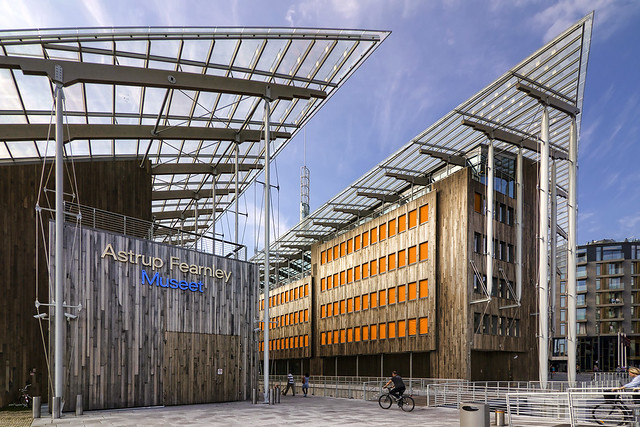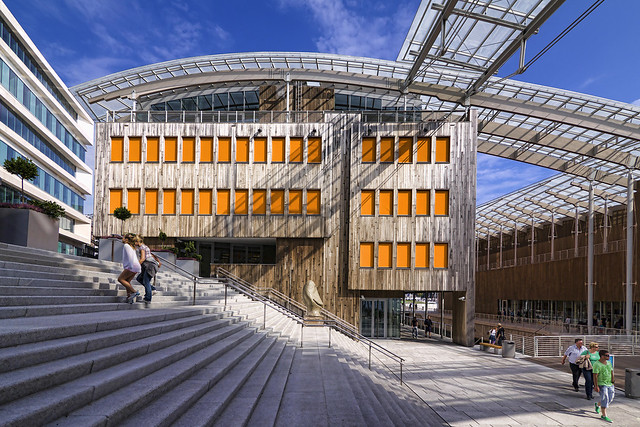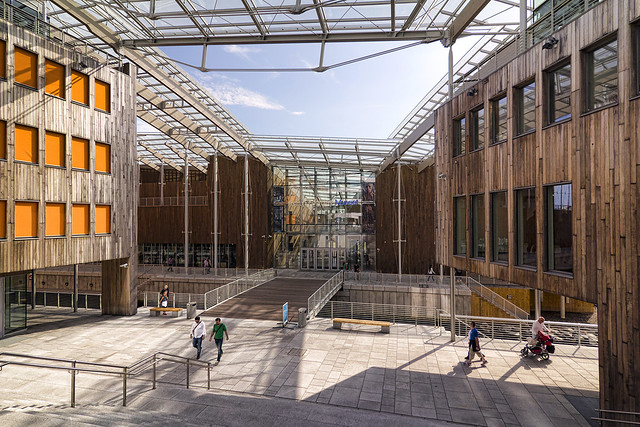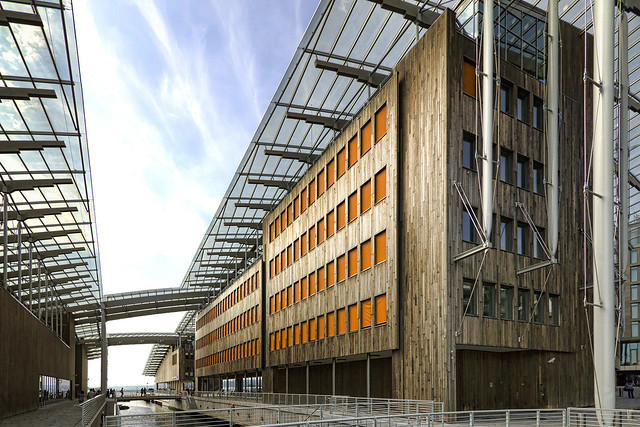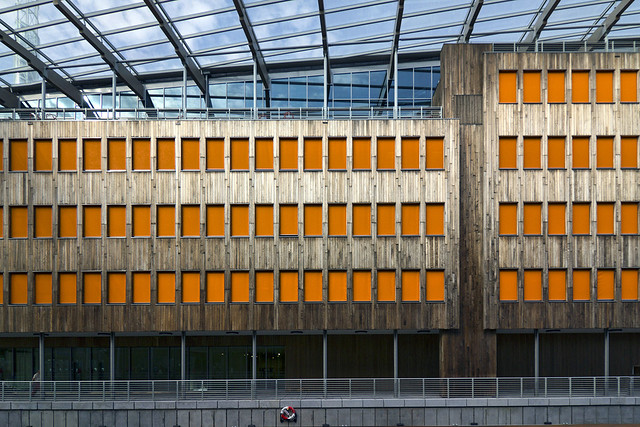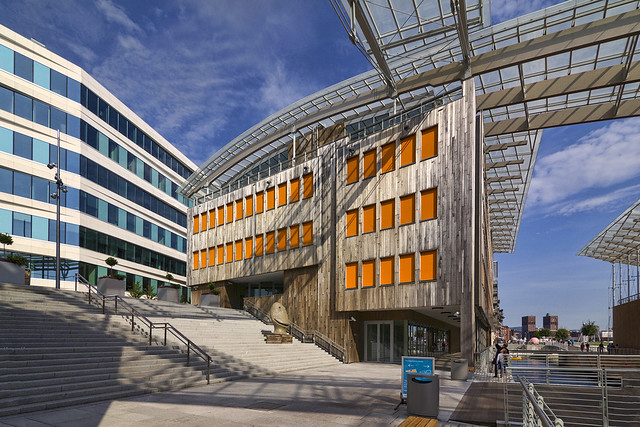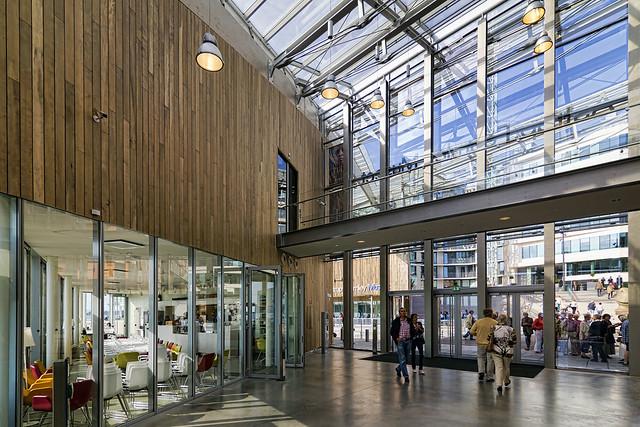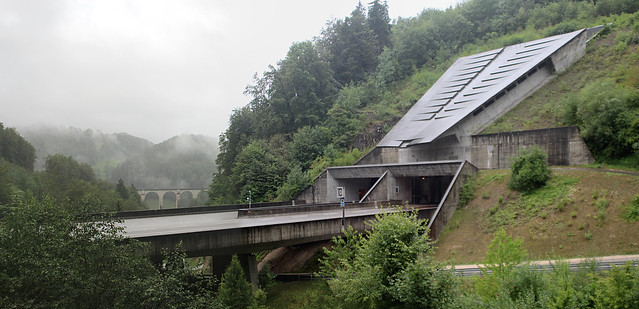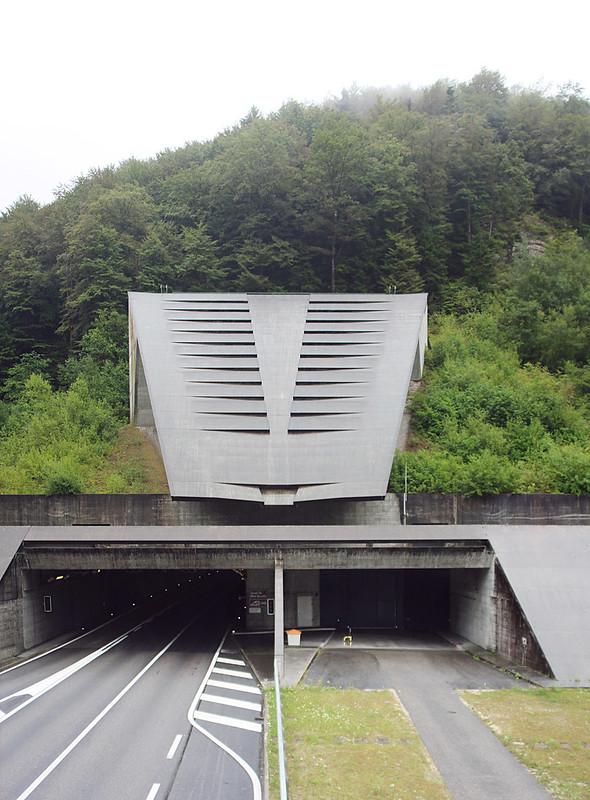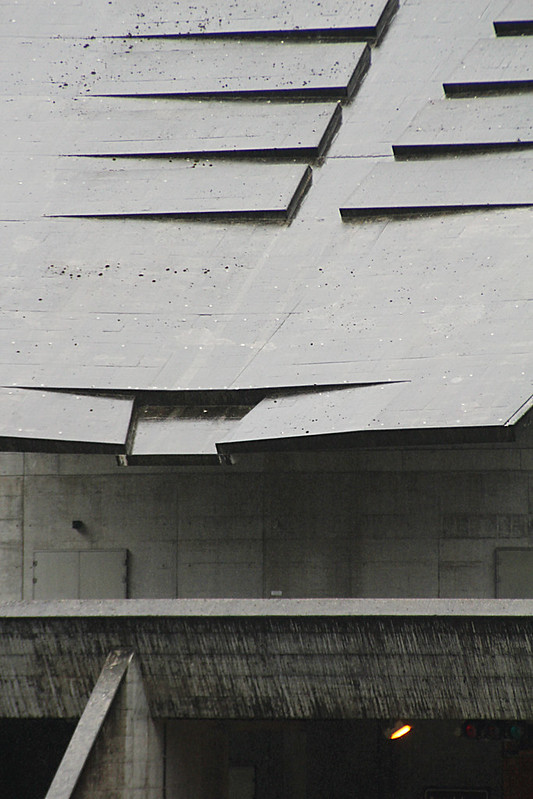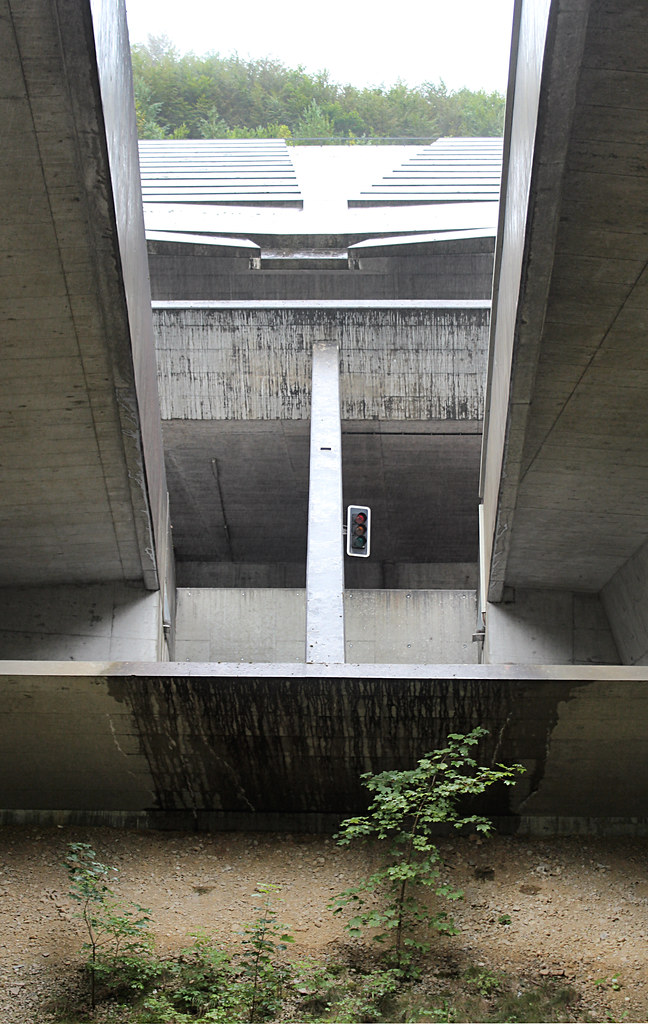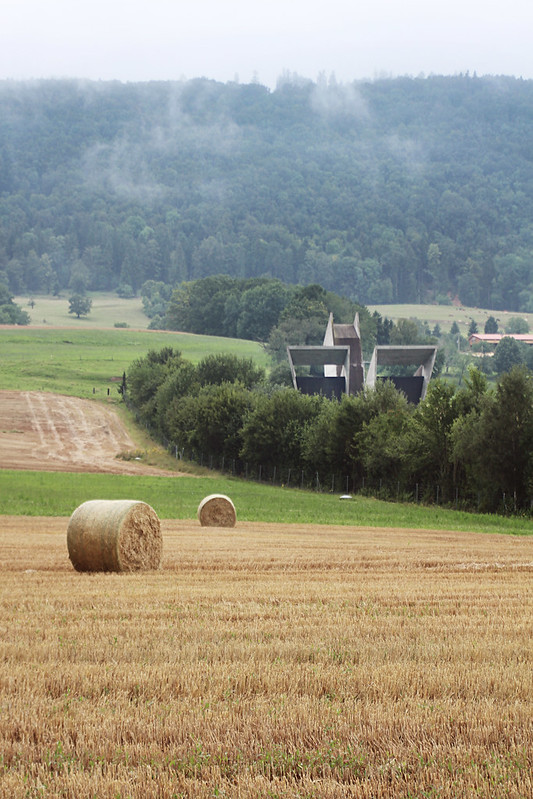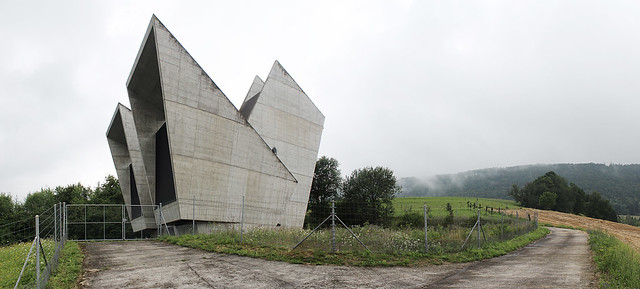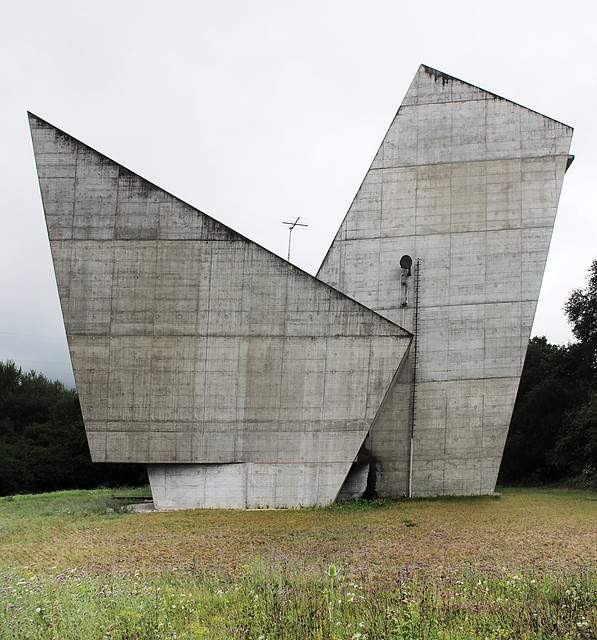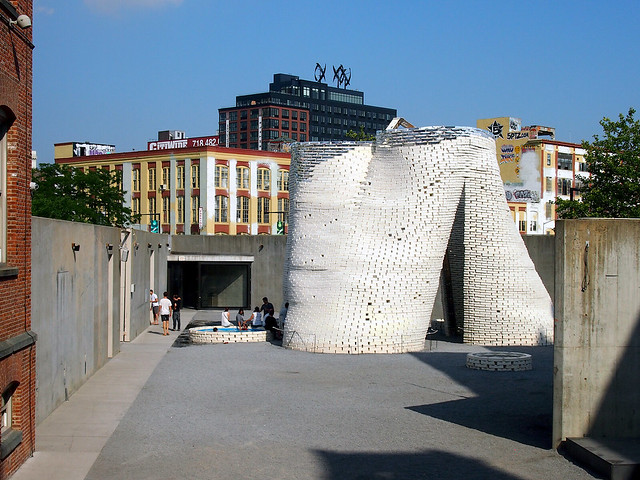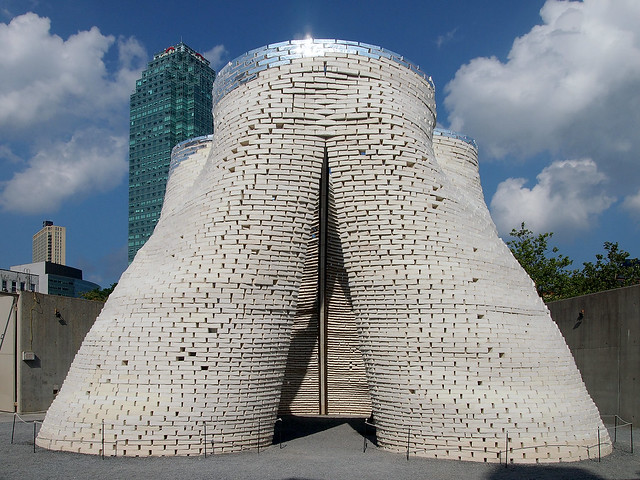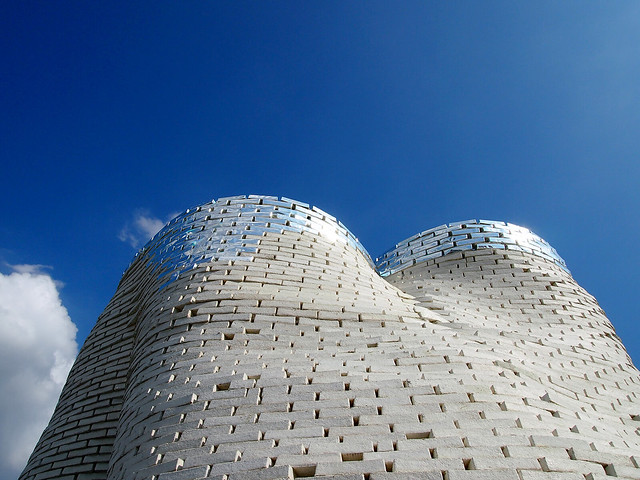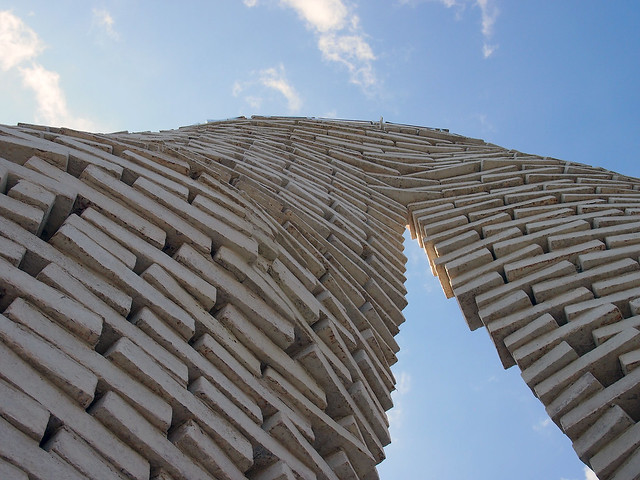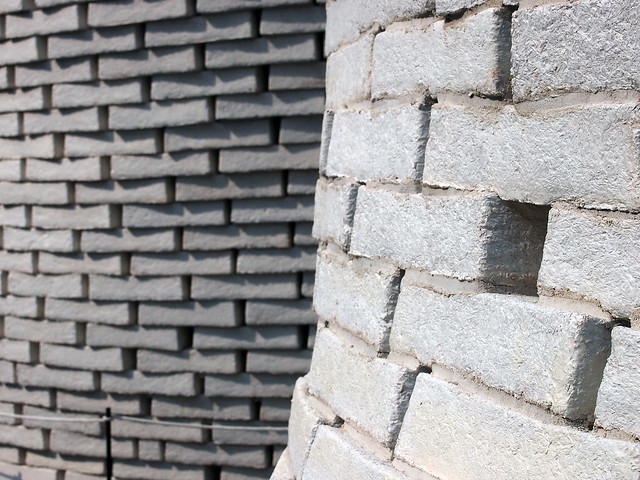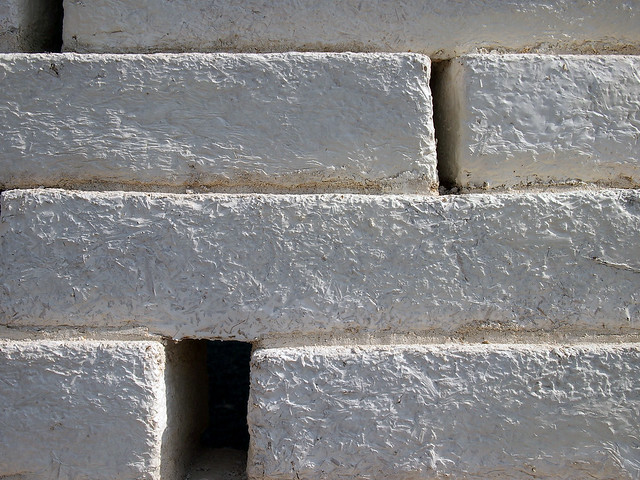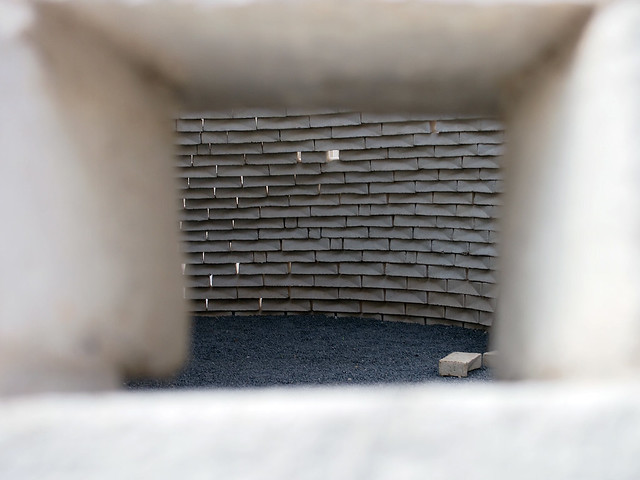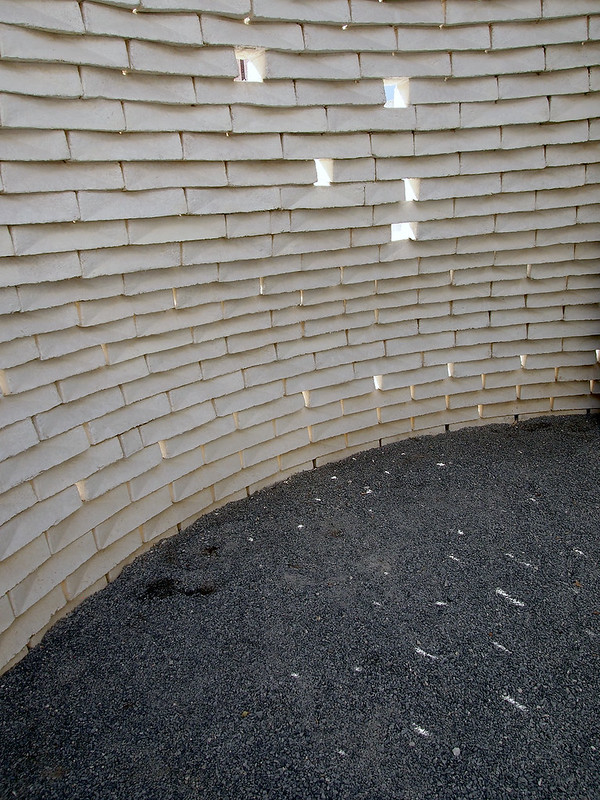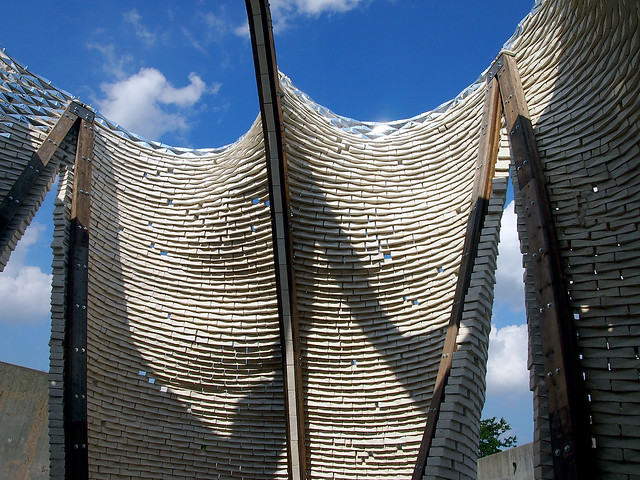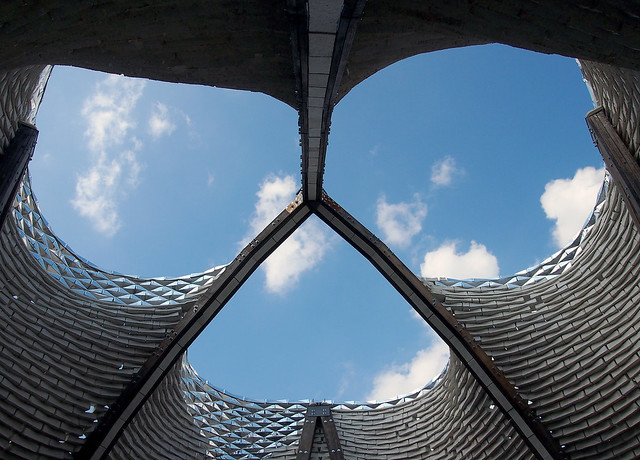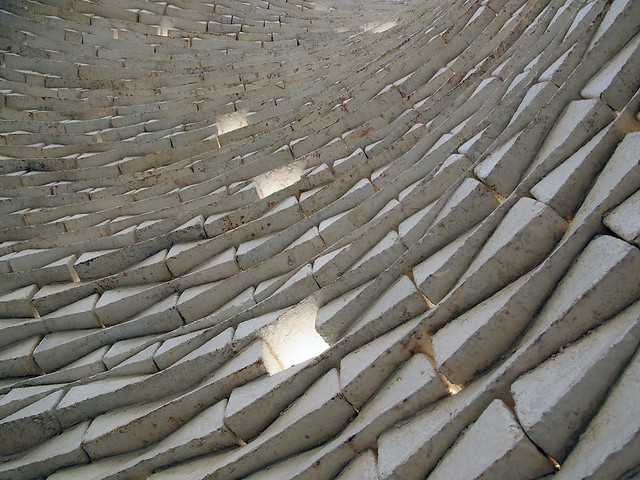Earlier today I was digging around this blog's drafts and I came across an unfinished post from late 2011 with just a couple photos, one a still from Jacques Tati's 1958 film Mon Oncle:

And one of Domeau Pérès's TATI - Canapé vert de Madame Arpel, a limited-edition sofa obviously modeled on the above piece of furniture in Villa Arpel:

I had spotted the sofa design at The Criterion Contraption, which points out how Tati "returns to shots of characters pretending to enjoy sitting in painfully uncomfortable chairs." This discomfort is not lost on Domeau Pérès, which describes the sofa (via Google Translate) as "the opportunity to work on discomfort ... a kind of self-criticism of [the modern design] profession." Only eight were made, and I'm sure whoever bought them cherishes their uncomfortable green sofas as much as Madame Arpel did in the film.
Revisiting this obvious instance of design imitating film – five decades later, to boot – seems fitting, now that France's national pavilion at the 2014 Venice Architecture Biennale is anchored by a large model of Villa Arpel from Tati's film:

Too bad curator Jean-Louis Cohen didn't put one of the sofas in the pavilion.

And one of Domeau Pérès's TATI - Canapé vert de Madame Arpel, a limited-edition sofa obviously modeled on the above piece of furniture in Villa Arpel:

I had spotted the sofa design at The Criterion Contraption, which points out how Tati "returns to shots of characters pretending to enjoy sitting in painfully uncomfortable chairs." This discomfort is not lost on Domeau Pérès, which describes the sofa (via Google Translate) as "the opportunity to work on discomfort ... a kind of self-criticism of [the modern design] profession." Only eight were made, and I'm sure whoever bought them cherishes their uncomfortable green sofas as much as Madame Arpel did in the film.
Revisiting this obvious instance of design imitating film – five decades later, to boot – seems fitting, now that France's national pavilion at the 2014 Venice Architecture Biennale is anchored by a large model of Villa Arpel from Tati's film:

Too bad curator Jean-Louis Cohen didn't put one of the sofas in the pavilion.

